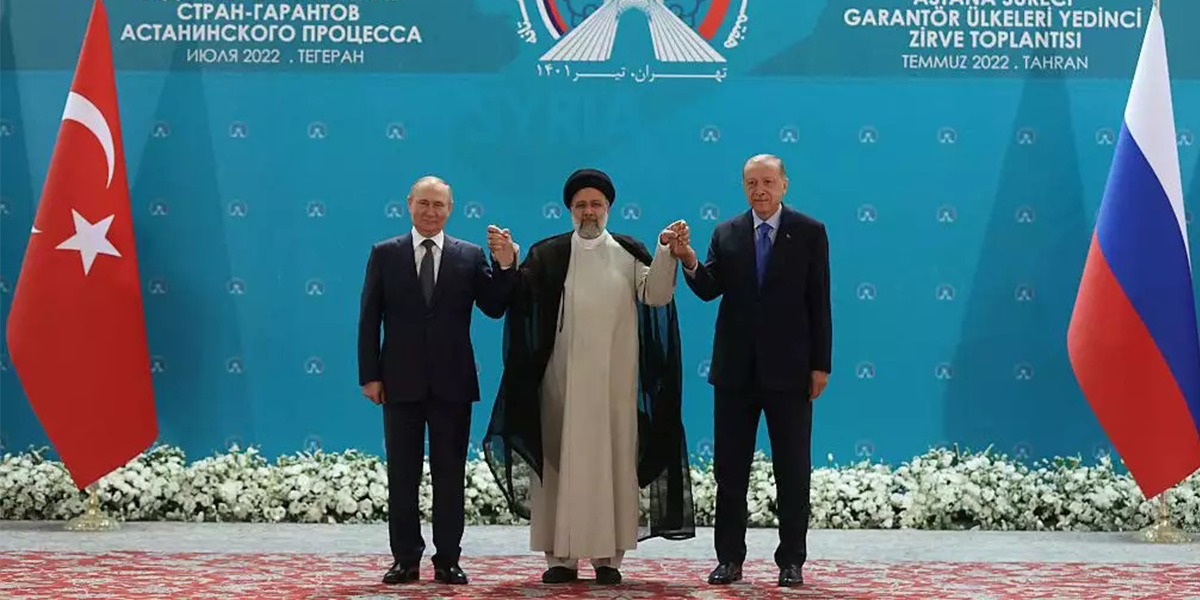ROJAVA – On the 19th of July, 2022, a meeting between the heads of state of Turkey, Iran and Russia took place in Tehran in order to discuss their country’s involvement in the war in Syria. The tripartite meeting took place amid Erdoğan’s calls for a new invasion of NES. No ‘green light’ for such an operation was given publicly by Iran or Russia.
In a meeting with Iran’s Khamenei, the latter told Erdoğan that “any military offensive into Syria’s north will definitely harm Turkey, Syria & the region, & will benefit the terrorists,” yet agreed that “We will certainly cooperate with [Turkey] in the fight against terrorism.” During the meeting, Erdoğan once again raised the issue of Turkish national security, saying “The terrorist organizations [referring to the YPG/YPJ] must be confronted and ousted from Syria.” He also expressed his hope “to receive Iranian and Russian support in this regard.” Khamenei’s use of “terrorists” is ambiguous. Iranian militias reportedly are cooperating with the YPG in order to defend the Shehba region from a possible Turkish attack. Iran’s interests in the region include the defence of the Shia-majority villages of Nubl & Zahraa from both the Turkish-backed SNA & HTS. This year, Iran-backed militias built at least one base in Shehba.
Equally cryptic, the Kremlin’s agenda in Tehran included measures to “eradicate the nest of international terrorism” & “radical Islamic terrorist organizations” in Idlib. These likely refer to ISIS & HTS, which have free rain in Turkish-occupied Syria, rather than the YPG/YPJ. At Tuesday’s trilateral talks, Putin stressed that “Syria’s sovereignty, territorial integrity & border safety must be respected.” Moscow’s Syria envoy added that Russia wanted to persuade Turkey “not to use force,” but to “find a solution through negotiations & dialogue.”
In the month since Tehran, no land invasion by the Turkish army has taken place. However, Turkey has escalated its attacks on the region, through near-constant shelling (only one day between July 19th and August 18th did not feature shelling on North and East Syria by the Turkish army or Turkish-backed SNA forces). Furthermore, it has increased the use of drones, which have conducted more flights into NES than in the past three months combined. Two-thirds of all drone-related deaths this year have occurred in the aforementioned timeframe.
RIC has compiled a timeline of Turkish attacks between July 19th and August 18th. It found that dozens of villages from Tirbespiye to Shehba were shelled almost every day. Exactly half (75) of all casualties of Turkish attacks on NES in these 31 days (150) were civilians. At least 7 children have been killed and 27 injured. Turkish attacks mainly killed SDF soldiers (29), but SAA soldiers are increasingly being targeted along the border with Turkey and Turkish-controlled territory as well.




